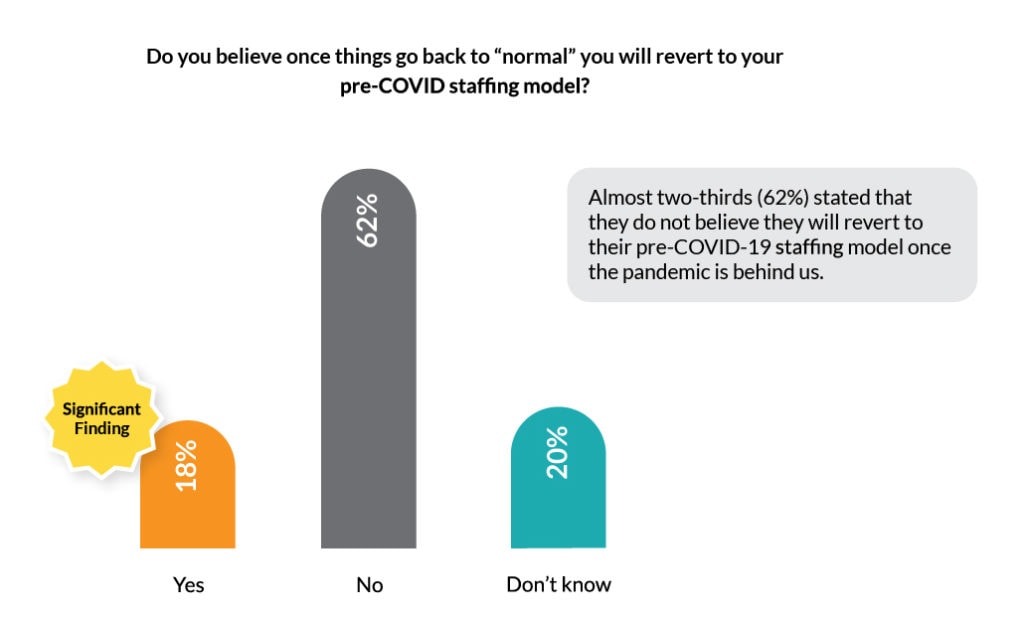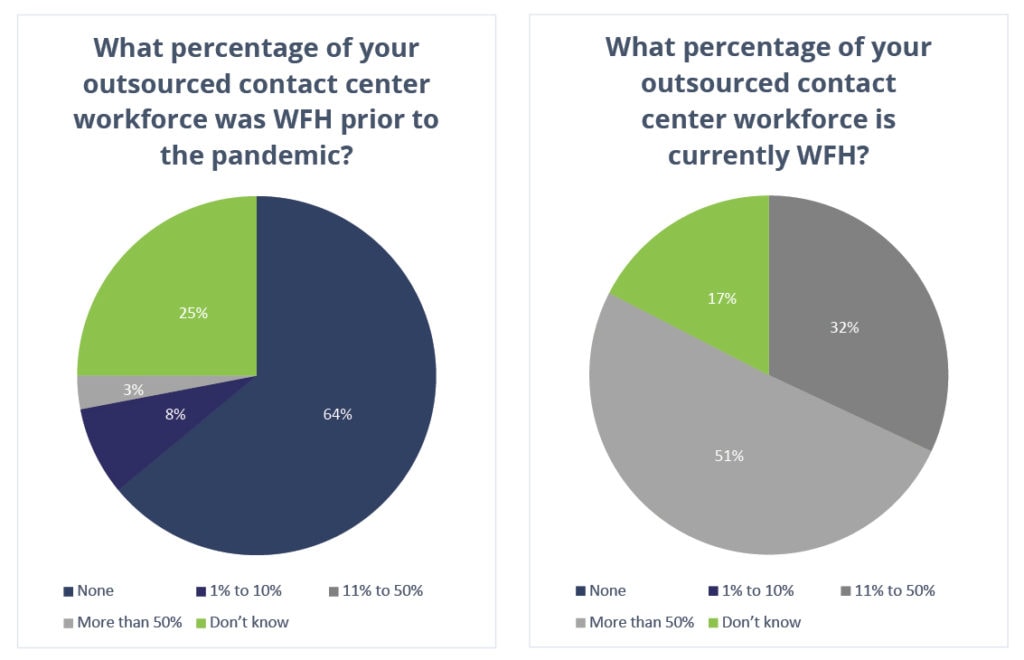
June 10, 2021
From pivoting on pay-for-performance metrics and decreasing their real estate footprints to designing new cost structures and doing site reviews virtually, vendor management organizations (VMO) are doing their best to navigate the business effects of COVID-19.
Now companies are taking proactive steps to help them operate post-pandemic and prepare for another unplanned crisis. And many are turning the lessons learned from the pandemic into business priorities for 2021.
What are those new priorities? In a recent survey conducted by COPC Inc., VMOs shared which priorities they’ll focus on this year.
The top three vendor management priorities of 2021 are:
- Revising outsourcing requirements and contracts at lightning speed while also reevaluating supplier capabilities and real estate footprints that best serve this new normal.
- Realization of a new cost structure and the impact on previous pricing components.
- Optimizing virtual management and supplier business planning.
During COPC Inc.’s State of Vendor Management Organization webinar, VMO leaders from Hilton and USAA detailed the successes and hurdles they experienced during the pandemic.
Here are important takeaways from the online discussion.
Business Pivots Are Happening More Frequently, Contracts Are Under New Scrutiny
VMOs across the industry are dealing with new pricing structures. The surge in out-of-sequence contracts and adjustments in pay-for-performance metrics are a few factors that caused new pricing structures.
John Billings, Sr. Director of Global Workforce and Vendor Management at Hilton Hotels & Resorts, explains why the company decided to review all of its partner contracts. Chief among them was to include language that acknowledges the rapid shift to virtual work.
Hilton isn’t the only enterprise company reviewing its partner contracts. Kyle Kennedy, President & COO of COPC Inc., said numerous companies are taking a second look at contracts due to the pandemic.
“People are wanting to codify the necessary changes that need to happen in their contracts,” Kennedy said. “We’re seeing out-of-term or out-of-sequence renegotiations in contracts come up very frequently with the customers we’re helping.”
Watch as Kyle explains the reasons behind these changes and what is causing them in the video below.
Working From Home Will Remain For Both Onshore And Offshore Teams
USAA, one of the nation’s largest insurance companies and featured panelist in our webinar, is reevaluating its work from home (WFH) policy. Whether the labor force is onshore or offshore, the insurance company is having new conversations around a long-term WFH program and its business implications.
“The pandemic brought in a new conversation around, ‘Is the market structure the right way to go?’ and ‘Do we need to look at more of an at-large work-at-home type of long-term program?’” Brian Giamanco, USAA’s Director of Third Party Relationship Management, said. “We’re going to be doing a lot of testing in those areas as we evolve into it.”
Like USAA, other companies are also reevaluating their WFH plans. According to the CXMB Series 2020 Corporate Edition report produced with our partners at Execs in the Know, 62% of survey respondents will not revert to pre-COVID-19 staffing models.

Additionally, WFH policies will remain in place no matter the location of the contact center – a fact revealed in the same study by COPC Inc. and Execs In The Know.

New Expenses And New Cost Savings Emerge For VMOs
Today companies are taking a wait-and-see approach when it comes to pricing for pay-for-performance and governance issues.
“The pricing hasn’t caught up yet to the reality of what’s going on,” Billings said. “A lot of companies’ business process outsourcers are incurring double costs. They had to ramp up a work-from-home operation very quickly, and there are a lot of costs associated with that. But they’ve still got a lot of real estate that’s sitting out there under long-term leases – three to five-year leases – and they haven’t been able to shed that yet. So, I think everyone is taking a wait-and-see attitude on how that’s going to impact pricing.”
Along with overcoming new real estate challenges, there is increased competition for labor from a surprising competitor – the U.S. government.
While the COVID-19 stimulus checks helped blunt the financial impact caused by the pandemic, USAA faces an unexpected hardship to find workers since many are receiving stimulus money and unemployment benefits. Listen to Brian explain the labor challenge he and his team are facing.
Onsite Reviews Go Virtual
Virtual meetings, once an innovative channel for communicating within teams, are an essential collaboration tool. Video conferencing tools are now critical for VMOs as they use them for onsite reviews offsite.
Companies are grappling with ways to adjust complete operational reviews that once were evaluated in-person but are now done virtually.
Listen to Brian as he shares how USAA continues to evolve its partner reviews in a virtual world
Like USAA, Hilton is adapting new virtual approaches to their once onsite reviews, such as virtual focus groups and business reviews.
Watch as John shares how Hilton is overcoming the challenge of virtual reviews and respecting the necessity of in-person evaluations once the pandemic is over.
As we continue to understand the long-term effects of COVID-19 on business operations, it can be said that VMOs are pioneering how to handle unique business challenges during future unimaginable crises.
Watch the entire webinar to hear more real-life examples from USAA and Hilton. Plus, discover the systematic approach you can take with your VMO using the COPC Customer Experience (CX) Standard for VMOs.